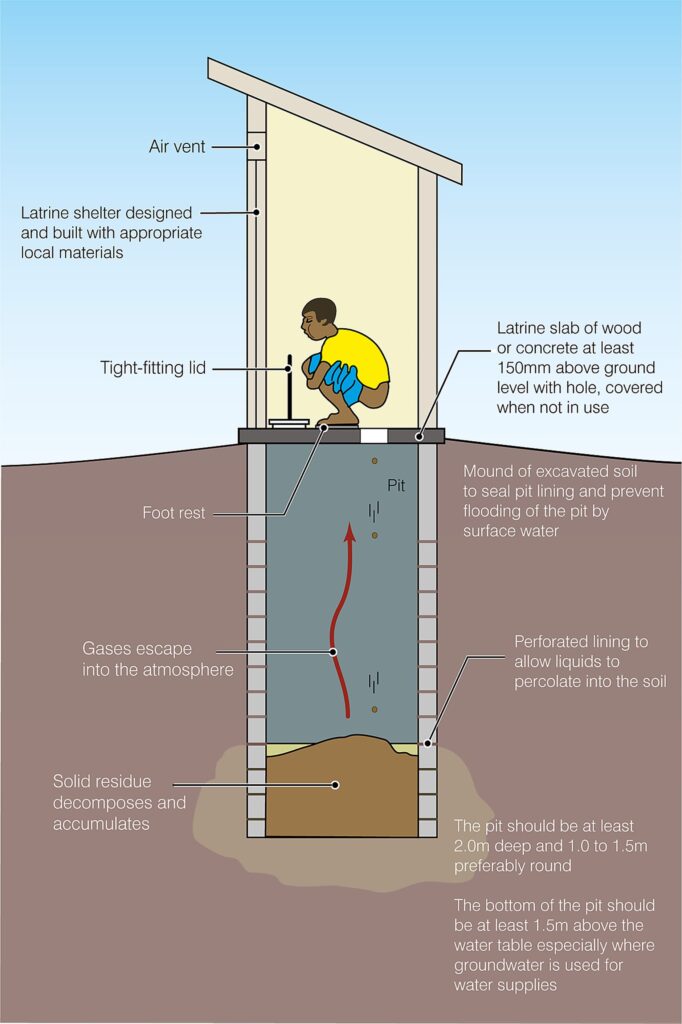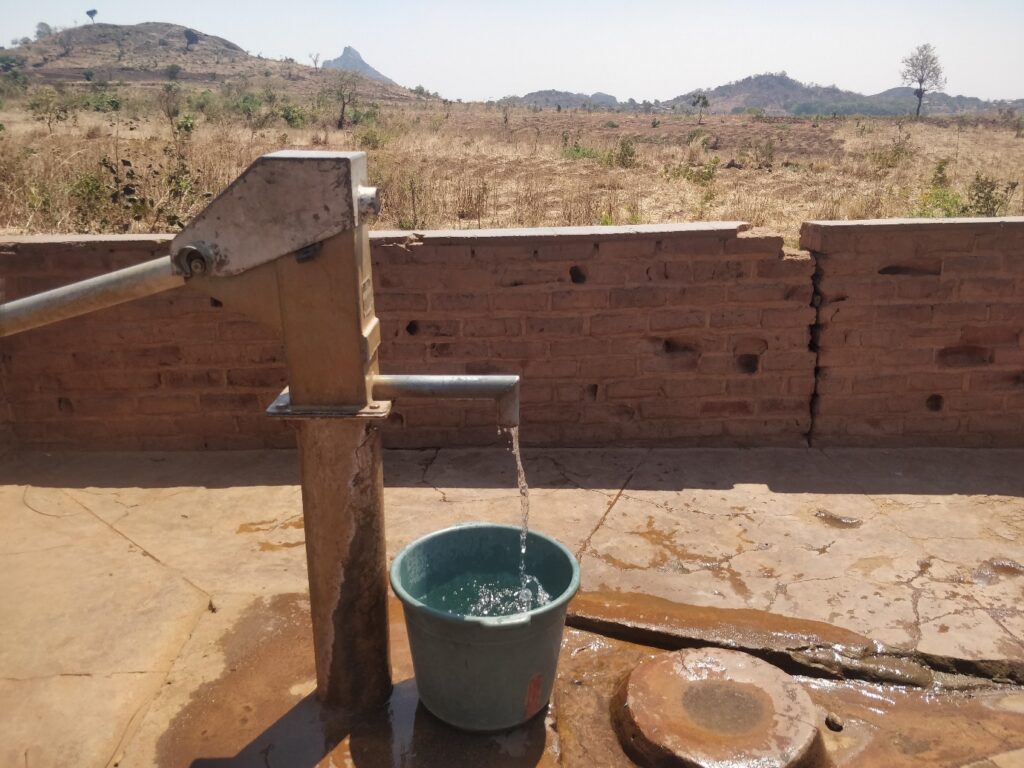The pitfalls of pit latrines – a challenge for sustainable sanitation
By Rebekah Hinton, researcher into land and water use in Malawi with The James Hutton Institute and the University of Strathclyde.
Ensuring good health, well-being, and sustainable development means tackling waterborne diseases head-on. They’re a global problem, contributing to more than 1,000 deaths in children under five every day.
As part of efforts to eradicate them, pit latrines play a key role. They are a simple yet effective way to collect human waste, which has hugely helped reduce open defecation. In regions like Malawi, where water, sanitation, and hygiene face considerable challenges, their role is vital.
However, improper management of pit latrines poses a threat, contributing to groundwater contamination and potential risks to public health, meaning a solution could actually contribute to the problem.
The Hutton has a long history of working with the water sector, but also with Malawi. Here, leaning on recent research we have done in Malawi, we take a look at the challenges, risks and interventions that could be made to make sure pit latrines are a protection against and not a cause of waterborne diseases.
Malawi’s unique challenges
In Malawi, water, sanitation and hygiene infrastructure are challenged. Some 82% of the population lack access to safely managed drinking water with 85% of the population relying on groundwater for drinking water.
Inadequate water, sanitation and hygiene conditions contribute to more than half of the disease burden.
Diarrheal diseases, often stemming from contaminated water sources, account for 7% of deaths in children under five in the country. A high rural population engaged in agriculture also make Malawi vulnerable to climate shocks.

The pit latrine pitfall
More than 90% rely on pit latrines. They are essential in reducing open defecation, but when not properly planned, built or managed, they can cause groundwater contamination.

Pits are typically dug by hand and have varying dimensions, according to personal preference. In Uganda, pits are often over 8m deep, while other pits are typically around 1.5 m deep. The pit is advised to be a circular construction to increase stability and is recommended to be lined with a semi-permeable material. The top 0.5-1 m of the pit latrine is always recommended to be lined, commonly with bricks, stone, concrete, or with timber.
This lining is to provide structural stability and support. It also stops surface water getting into the pit. However, despite lining being recommended, pit latrines frequently fail to meet this construction quality. In Malawi, where 86% of pit latrines are unlined, this presents a serious concern for latrine collapse.
It is recommended that the floor of the latrine is fitted with a concrete slab, to increase hygiene and structural integrity, however, over 75% of the 200,000 latrines surveyed in Malawi did not have a concrete slab. Further improvements can be made to latrine structures by fitting odour controlling devices or flush pouring systems.
Following pit construction, a superstructure is built to cover the facility, provide privacy and prevent the pit filling with rainwater. Construction varies considerably, but it typically from brick or timber, although some can be cloth fastened to pieces of wood. Construction quality is poor in Malawi with over 35% of pit latrines having no roof, inadequate privacy and over 75% not offering security.
Ground water contamination
Badly managed, pit latrines can also impact ground water – and therefore drinking water. A key way to prevent ground water pollution from pit latrines involves maintaining a suitable distance from water points. However, the unregulated nature of pit latrine construction and frequent replacements make enforcing construction standards and safe distances challenging.
But the problem doesn’t end there. Inappropriate management of disused pit latrines, with 58.4% undergoing no decommissioning process, also poses ongoing public health risks. These risks – and the risk of drinking water contamination – is heightened during extreme rainfall and flooding, leading to contaminated surface runoff and a rise in the groundwater table.
These challenges were demonstrated in the aftermath of Cyclone Idai in Malawi, in March 2019. Following this event, the consequences extreme weather events and pit latrine contamination risk was seen to be closely linked to the proximity and density of pit latrines to water-points.

What can we do?
Pit latrines will remain pivotal in the sanitation strategies of many low and middle-income countries. It is crucial to continue investing in and promoting their proper usage, recognizing their significance in reducing open defecation.
In areas with high pit latrine density, especially where groundwater is heavily used for drinking water, as in Malawi, exploring alternatives becomes important. Piped sanitation is an option, although it is expensive, disruptive to implement, requires sewage works construction, takes time and may not be feasible in informal residential areas. Decentralized sewage treatment systems can be more feasible but are still not always a viable option.
Septic tanks offer another option but come with high costs and the potential for groundwater contamination. The management of pit latrine usage, ensuring appropriate use and effective management, will continue to be critical in navigating these challenges.
Areas for intervention
We propose focusing on three key aspects of pit latrine construction and use to lower their impact on water supplies:
- Appropriate construction: Initiatives should include promoting proper pit latrine lining with the use of low-cost and readily available materials, through educational programs.
- Management and monitoring: Advocating for frequent pit latrine emptying is essential to limit chemical and microbial contaminant leakage into groundwater.
- Decommissioning: Implementing effective strategies for managing decommissioned pit latrine facilities is vital to address environmental and public health concerns associated with abandoned facilities.
Where next?
As pit latrines remain integral to sanitation strategies in many low and middle-income countries, a comprehensive approach that recognizes their pitfalls and risks of groundwater contamination, as well as their value, is critical.
Immediate and concerted global efforts are required to address and manage the paradoxical nature of pit latrines and to work more effectively towards improving health, sustainable development, and climate justice.
Read more about Rebekah’s research on pit latrines in the International Journal of Environmental Research and Public Health here.
Rebekah Hinton is a researcher into land and water use in Malawi, with a focus on groundwater contamination. She is a PhD student with the University of Strathclyde and the James Hutton Institute.
Disclaimer: The views expressed in this blog post are the views of the author(s), and not an official position of the institute or funder.
